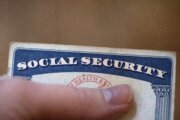Federal Reserve rate hikes have been among the most widely covered personal finance topics for more than a year. But while most people recognize that rising interest rates equate to more expensive debt, few of us truly understand how a change in the Fed’s target rate affects our wallets.
So, let’s take a look at a handful of the most notable ways that Fed rate hikes can add up to thousands of dollars lost for the average consumer. By the way, if the amounts mentioned below don’t match your situation, you can just adjust the quoted costs proportionally.
1. $52,500 in additional interest on a $300,000 home loan over 30 years: All the talk about mortgage rates centered on record lows just a few months ago. But that began to change about a month and a half before the Fed’s Dec. 14 meeting, as expectations of a target-rate hike started to push annual percentage rates higher. The national average APR on a 30-year fixed-rate mortgage with half a point purchased up front went from 3.47 percent for the final week of October to 4.08 percent on Dec. 1 and ended the year at a post-2014 peak of 4.32 percent, according to data from Freddie Mac.
When you crunch the numbers, this 85 basis point spike ended up saddling the average year-end homebuyer with more than $52,500 in extra interest over the life of his or her roughly $300,000 home loan. It also added $146 to that loan’s monthly payment, which rose from $1,342 to $1,488. Fortunately, mortgages rates have retreated a bit to begin 2017 and remain quite low by historical standards. But this just goes to show that even modest APRs increases can cost prospective homebuyers big time.
[See: 12 Hidden Costs of Homeownership.]
2. $125 in extra interest on credit cards: The Fed’s target rate has gone up by a total of 50 basis points in the last 13 months. As a result, the average household with credit card debt can now expect to incur about $125 in extra interest charges while repaying roughly $8,000 in balances over the course of five years.
That might not sound like a lot, but it certainly feels like it when you owe so much to begin with. Plus, it all adds up. Each quarter-point increase in the Fed’s target rate costs credit card users more than $1 billion overall. And there are plenty of other new Fed-inspired costs to consider, as you’ll see below.
[See: 12 Habits to Help You Take Control of Your Credit.]
3. $300 in additional interest on a new-car loan: The average APR on a 48-month new-car loan jumped from 4 percent in November 2015 to 4.45 percent in November 2016, according to the most recent Fed data, which doesn’t even include the Dec. 14 hike. In other words, just a single rate hike and the threat of a second added about $300 in interest to a $30,000 loan, which was the average for car buyers in 2016, according to Experian.
[See: 12 Habits of Phenomenally Frugal Families.]
4. $11 in “good” interest from your bank account: While the cost of borrowing money has risen considerably as a result of the Fed’s actions, bank-account yields have barely budged. Annual percentage yields for online savings accounts and branch-based checking accounts have enjoyed the biggest bump, rising by just three basis points on average during the second half of December, according to WalletHub’s latest Banking Landscape Report. Meanwhile, the yields on branch-based savings accounts didn’t change, and the average APY for an online checking account actually fell by 4 basis points.
To make a long story short: The best-case scenario for the average family — which has about $36,000 in cash, according to data from the Federal Reserve — is to earn a few extra dollars in the good kind of interest from their bank account in 2017. But that’s just a drop in the bucket of bad interest that the Fed dumped on their heads in December.
With all of this being said, it’s important to point out that rising rates aren’t all bad. They reflect confidence in the economy’s strength from the country’s central bankers and promise to nip inflation in the bud. But since the Fed seems to be just getting started, we also need to heed its December warning and get our financial houses in order. After all, higher rates leave us with less money to spend, and payments on the billions of dollars we owe to credit card companies alone are barely affordable as things currently stand.
More from U.S. News
What to Do If You’ve Fallen (Way) Behind on Your Credit Card Payments
9 Financial Tools You Should Be Using
How Federal Reserve Rate Hikes Affect Your Wallet originally appeared on usnews.com







